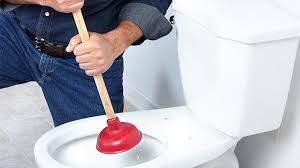Dealing with a plumbing clog can be a frustrating experience, but understanding the causes and solutions can help you tackle the problem effectively. Whether it’s a slow-draining sink or a completely blocked toilet, knowing how to handle a plumbing clog can save you time and money. In this guide, we’ll explore the common causes of clogs, DIY solutions, and when to call a professional.Common causes of plumbing clogs include:
- Hair buildup in showers and sinks
- Food particles and grease in kitchen drains
- Toilet paper or non-flushable items in toilets
- Mineral deposits in pipes
- Tree roots invading sewer lines
To prevent plumbing clogs, consider the following tips:
- Use drain covers to catch hair and debris.
- Avoid pouring grease or oil down the drain.
- Only flush toilet paper and human waste.
- Regularly clean your drains with natural solutions like baking soda and vinegar.
- Schedule annual plumbing inspections.
If you’re already facing a plumbing clog, here are some DIY methods to try:
- Plunger: A plunger can often dislodge minor clogs in sinks, toilets, and showers.
- Drain Snake: A drain snake or auger can reach deeper clogs that a plunger can’t handle.
- Baking Soda and Vinegar: This natural combination can break down organic matter causing the clog.
- Hot Water: Pouring hot water down the drain can help melt grease buildup.
However, some clogs require professional attention. Call a plumber if:
- The clog persists after multiple DIY attempts.
- You notice foul odors coming from your drains.
- Multiple drains in your home are clogged simultaneously.
- There are signs of water damage or leaks.
In conclusion, a plumbing clog is a common household issue that can often be resolved with the right tools and knowledge. By understanding the causes and taking preventive measures, you can minimize the chances of future clogs. For stubborn or complex clogs, don’t hesitate to seek professional help to avoid further damage to your plumbing system.

